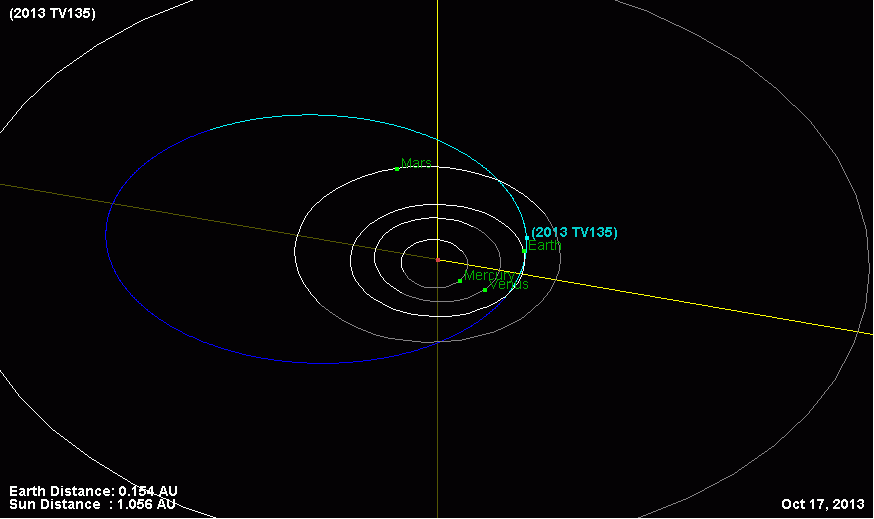Newly Discovered Asteroid TV135 Not Likely To Hit Earth In 2032: NASA

The possibility that newly discovered asteroid 2013 TV135 could hit Earth is almost nil, NASA said on Friday, allaying earlier reports that the massive asteroid might collide with Earth in 2032.
In a post titled “Asteroid 2013 TV135 – A Reality Check,” NASA said that according to initial estimates from its Near-Earth Object Program Office, the probability that the asteroid could impact earth in 2032 -- when it is expected to be back in Earth’s neighborhood -- is only one in 63,000.
NASA expects that additional observations of the asteroid -- first discovered by Ukrainian astronomers on Oct. 8, 2013 -- in the coming weeks will most likely result in a “dramatic reduction, or complete elimination, of any risk of Earth impact.”
"To put it another way, that puts the current probability of no impact in 2032 at about 99.998 percent," Don Yeomans, manager of NASA's Near-Earth Object Program Office, said in the Web post.
"This is a relatively new discovery," he added. "With more observations, I fully expect we will be able to significantly reduce, or rule out entirely, any impact probability for the foreseeable future."
TV135, estimated to be about 1,300 feet (400 meters) in size, was discovered after it came close to Earth on Sept. 16. The asteroid, in its orbit, comes as close to the sun as Earth's orbit, and in its outer reach, it goes as far out as about three quarters of the distance to Jupiter's orbit, NASA said.
NASA noted that the asteroid has an orbital period that spans almost four years, and with only a week of observations of its orbital period, the agency cannot offer accurate results predicting its future course. However, the asteroid could come back near to Earth in 2032.
“The object should be easily observable in the coming months, and once additional observations are provided to the Minor Planet Center in Cambridge, Mass., the initial orbit calculations will be improved …” NASA said.
On the Torino Impact Hazard Scale, TV135 is listed as a 1 out of possible 10, or “no unusual level of danger," Yahoo News reported.
The attempts to track objects that fly dangerously close to Earth have intensified in the recent years. NASA and several federal and private space agencies are also working toward developing methods to avoid a possible collision.
Since Earth cannot deviate from its trajectory or protect itself, space scientists are mulling over various methods to deviate the asteroids that are destined to collide with Earth. The options include using nuclear bombs to deflect the asteroid’s course to destroying them with atomic explosions. Some scientists have suggested spray-painting some asteroids to nudge them off the trajectory due to how they would reflect light differently once "painted."
© Copyright IBTimes 2024. All rights reserved.






















